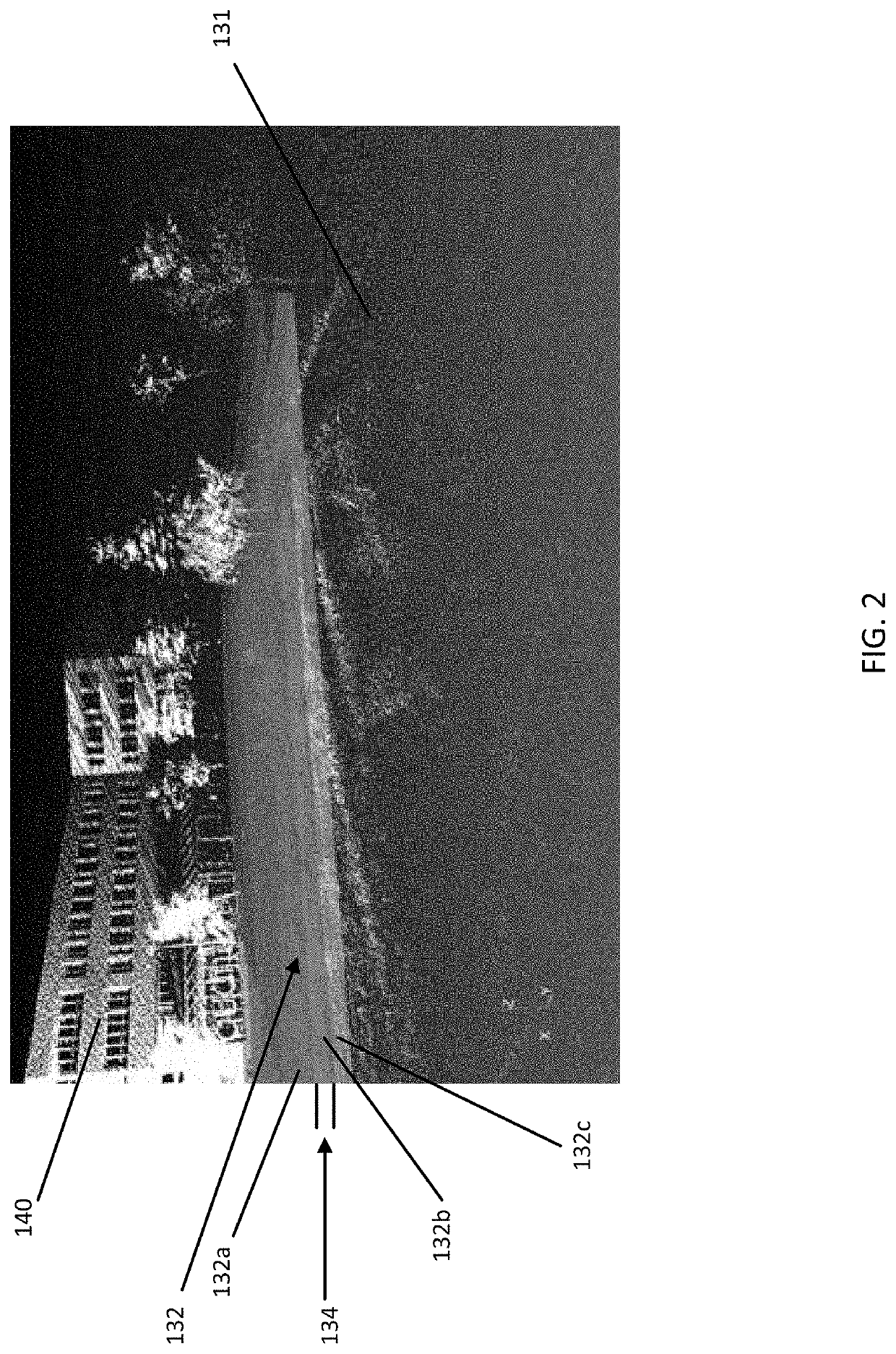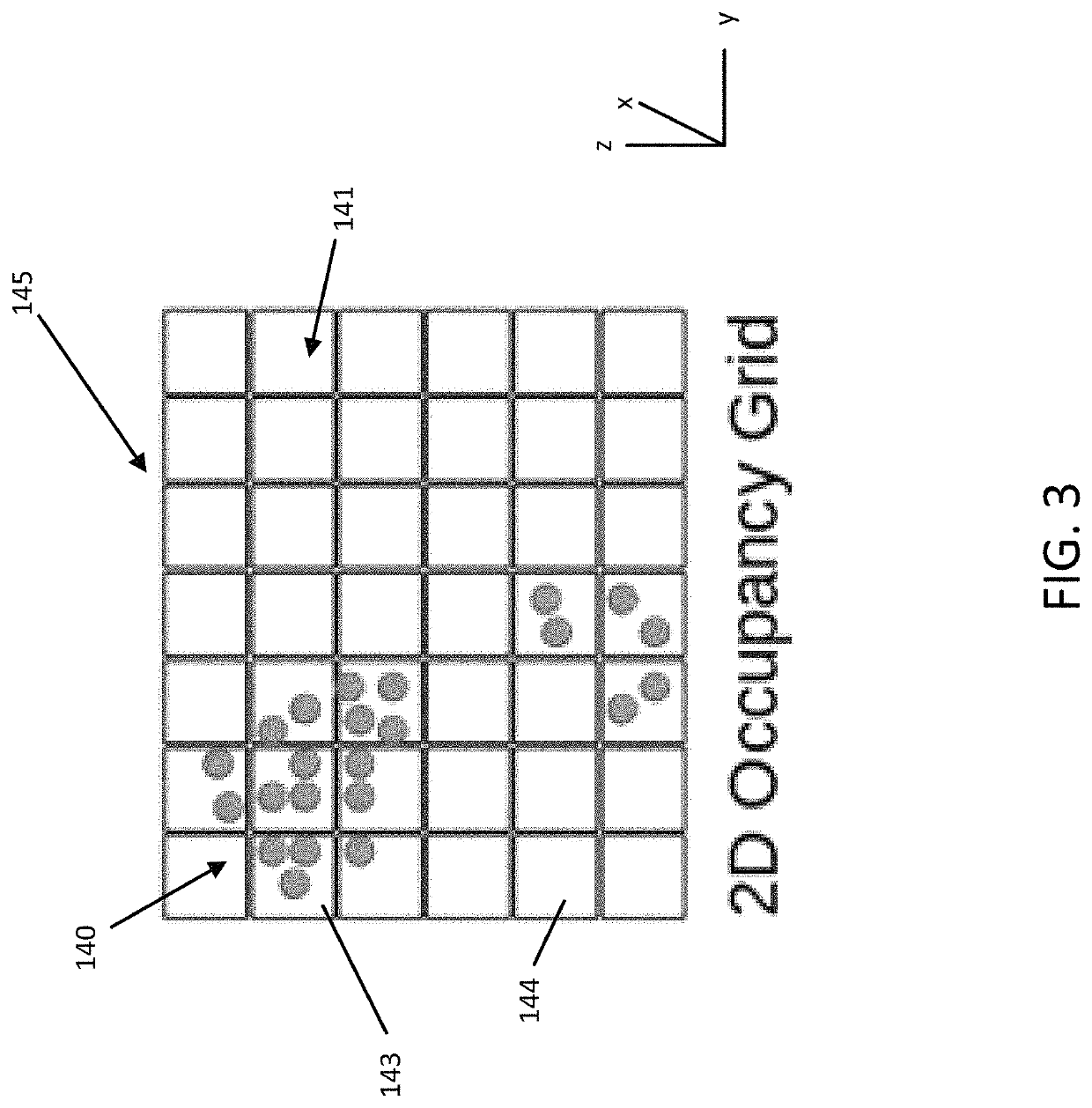Automatic detection and positioning of pole-like objects in 3D
a technology applied in the field of automatic detection and positioning of polelike objects in 3d, can solve the problems of large blind spots, application requirements that require greater accuracy than, and additional challenges for the environment in improving this accuracy
- Summary
- Abstract
- Description
- Claims
- Application Information
AI Technical Summary
Benefits of technology
Problems solved by technology
Method used
Image
Examples
embodiment 1
A method for automatically detecting pole-like objects for a location along a region of a roadway, the method comprising:
[0148]receiving, by a processor, point cloud data associated with the location along the region of a roadway;
[0149]identifying, by the processor, horizontal slices of point cloud data based on a predetermined horizontal slice thickness or a predetermined resolution;
[0150]generating, by the processor, two-dimensional (2D) occupancy images for the horizontal slices of point cloud data, wherein a 2D occupancy image for a horizontal slice of point cloud data represents a finite height of point cloud data;
[0151]detecting, by the processor, vertical clusters of point cloud data based on the 2D occupancy images;
[0152]determining, by the processor, whether the vertical clusters of point cloud data represent pole-like objects; and
[0153]modeling, by the processor, the vertical clusters of point cloud data as cylinders.
embodiment 2
The method of embodiment 1, wherein identifying horizontal slices of point cloud data comprises:
[0154]associating the point cloud data to respective horizontal slices of point cloud data based on the predetermined horizontal slice thickness or resolution;
[0155]estimating point cloud data associated with a road surface at the location along the region of the roadway; and
[0156]excluding the point cloud data estimated to be associated with the road surface at the location along the region of the roadway from the horizontal slices of point cloud data.
embodiment 3
The method of embodiment 1 or 2, wherein generating the 2D occupancy images comprises:
[0157]assigning the point cloud data in respective horizontal slices of point cloud data to corresponding grid cells;
[0158]determining a grid cell occupancy for the grid cells;
[0159]generating 2D occupancy grids based on the determined grid cell occupancy for the grid cells; and
[0160]encoding the 2D occupancy grids as 2D occupancy images.
PUM
 Login to View More
Login to View More Abstract
Description
Claims
Application Information
 Login to View More
Login to View More - R&D
- Intellectual Property
- Life Sciences
- Materials
- Tech Scout
- Unparalleled Data Quality
- Higher Quality Content
- 60% Fewer Hallucinations
Browse by: Latest US Patents, China's latest patents, Technical Efficacy Thesaurus, Application Domain, Technology Topic, Popular Technical Reports.
© 2025 PatSnap. All rights reserved.Legal|Privacy policy|Modern Slavery Act Transparency Statement|Sitemap|About US| Contact US: help@patsnap.com



